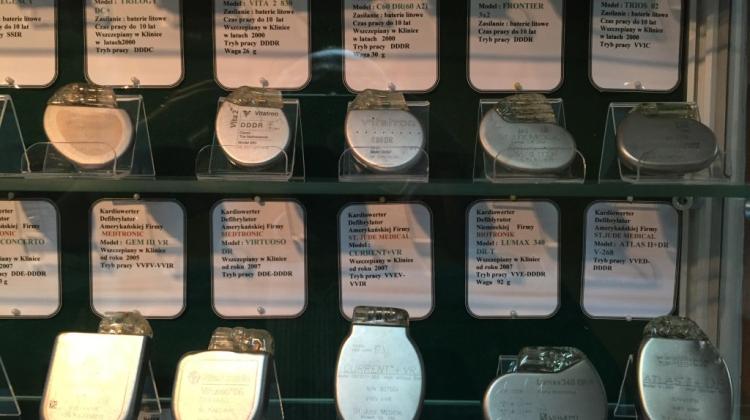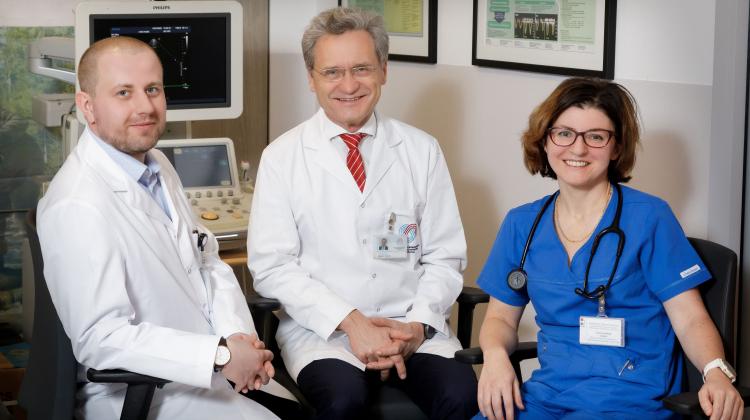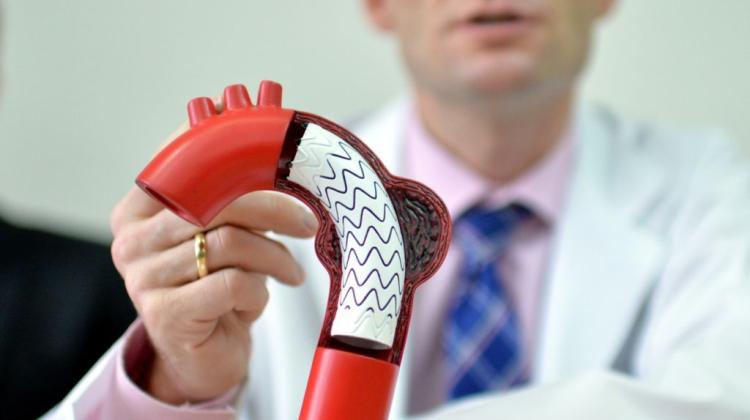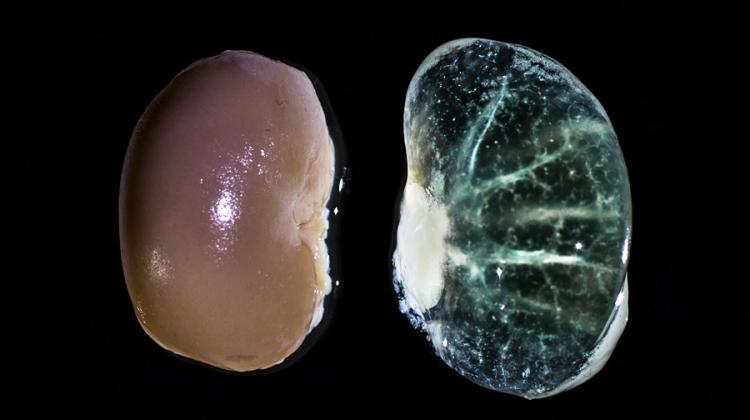The first pacemaker in Warsaw implanted 50 years ago
 Photo: PAP/Zbigniew Wojtasiński
Photo: PAP/Zbigniew Wojtasiński
The first pacemaker in Warsaw and the second in Poland was implanted 50 years ago in the Department of Internal Medicine of the Medical Academy (now the Medical University of Warsaw) - recalled in an interview with PAP Dr. Marcin Grabowski, MD.
On this occasion, the Department of Cardiology, Medical University of Warsaw, which is continuing the tradition of the former Department of Internal Medicine, opened an exhibition of pacemakers and cardioverter defibrillators, which in the last 50 years have been implanted in patients. One of the organizers is Stefan Olempski, a technician in the Department of Cardiology, who participated in the first pacemaker implantation procedure in Warsaw.
The procedure was carried out at the end of 1965 in the Hospital of the Infant Jesus at Nowogrodzka Street in Warsaw, where the Department of Internal Medicine was located. It was headed by Prof. Zdzisław Askanas, president of the Polish Cardiac Society and the first national consultant in the field of cardiology.
The procedure in Warsaw was the second pacemaker implantation performed in Poland. The first such surgery was performed in 1963 in Gdańsk by Prof. Zdzisław Kieturakis and Dr. Wojciech Kozłowski. Five years earlier, on 8 October 1958, Swedish heart surgeon Dr. Ake Senning implanted the world’s first stimulator in Larsson Arne. The Swedish patient lived 86 years, died in 2001 after being implanted with as many as 24 stimulators of successive generations (he outlived Dr. Senning).
The Warsaw exhibition presents all major types of pacemakers used in the world in the last half-century. The first stimulators, also called pacemakers, had mercury power. They were made of metal, and then with titanium parts embedded in the resin. The only "plastic" pacemakers at the time were produced by a Czechoslovakian company Tesla, but only a few such devices ended up in Poland in the 1970s.
The first pacemakers were quite heavy, weighed 140 grams and worked only for two years. They were 2.5 cm thick. They were not reliable - when resin broke, they stimulated the heart at a higher rate, which was dangerous for the patient. In the second half of the 1970s the operating time of these devices was extended to 5 years, which was a huge progress.
Also presented at the exhibition are models of nuclear pacemakers, which in theory could work for 30 years. They were powered by plutonium. Electrodes used in them were less durable, which is why their life was estimated at over 15 years. They were large and complex, produced high internal temperature reaching 300 degrees Celsius. They cost 6 to 7 thousand dollars.
Only 4 nuclear pacemakers were implanted in Poland. 14-year-old girl received the first of them on July 27, 1974. The procedure was performed in the 4th Department of Internal Medicine in Warsaw.
In the second half of the 1970s doctors began to use a new generation of pacemakers, powered by lithium batteries, which extended their life. They could work for 7-10 years. They were first used in 1972 in Italy (not in the United States), and then quickly replaced mercury pacemakers. They were more reliable and only weighed 50-70 grams.
"These devices are now much smaller, lighter and safer for patients, and their implantation has become less complicated and does not require opening the chest" - explained Dr. Marcin Grabowski. Recent stimulators are 3 by 4 cm boxes, weigh only 21-31 grams, and their life is estimated at over a dozen years.
Procedures are performed under local anaesthesia. The pacemaker is implanted subcutaneously, usually below the left clavicle. The electrodes are introduced in an endovascular procedure - through the veins. The device has advanced features: you can program the frequency and methods of assessing the activity of the patient, it also allows to identify worrying heart conditions, for example arrhythmia.
According to Dr. Grabowski, earlier pacemakers reacted badly to a magnetic field, which could even turn them off. The current devices allow to perform MRI in a patient. They are reliable, sometimes there are failures only within the electrode. To ensure patient safety, the remote monitoring devices are used that allow for early intervention in critical conditions.
In the past, pacemakers were implanted only in patients who could not survive without them. Today, the procedures are more often performed in order to improve the quality of life, and the indications for implantation are getting wider. It is also performed in patients at high risk of disorders.
One of the latest devices implanted in patients in the Department of Cardiology, Medical University of Warsaw, is the so-called ILR (implantable loop recorder). They allow to determine why, for example, the patient suffers from sudden, recurrent fainting. Traditional methods, such as holter, do not record fainting.
"We had a patient, in whom doctors, family and friends suspected epilepsy. Other symptoms indicated problems with the heart. We implanted a loop recorder. After two months, the patient experienced another loss of consciousness. It turned out that his heart stopped for 15 seconds! The implanted recorder immediately registered the event, enabled the diagnosis of syncope and thus solved the patient’s problem" - recalled Dr. Grabowski.
PAP - Science and Scholarship in Poland, Zbigniew Wojtasiński
zbw/ agt/ mrt/
tr. RL
Przed dodaniem komentarza prosimy o zapoznanie z Regulaminem forum serwisu Nauka w Polsce.


















